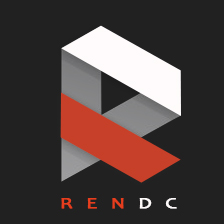You should use ArrayList over Vector because you should default to non-synchronized access. Vector synchronizes each individual method. That's almost never what you want to do. Generally you want to synchronize a whole sequence of operations. Synchronizing individual operations is both less safe (if you iterate over a Vector, for instance, you still need to take out a lock to avoid anyone else changing the collection at the same time) but also slower (why take out a lock repeatedly when once will be enough)? Of course, it also has the overhead of locking even when you don't need to. It's a very flawed approach to have synchronized access as default. You can always decorate a collection using Collections.synchronizedList - the fact that Vector combines both the "resized array" collection implementation with the "synchronize every operation" bit is another example of poor design; the decoration approach gives cleaner separation of concerns. Vector also has a few legacy methods around enumeration and element retrieval which are different than the List interface, and developers (especially those who learned Java before 1.2) can tend to use them if they are in the code. Although Enumerations are faster, they don't check if the collection was modified during iteration, which can cause issues, and given that Vector might be chosen for its syncronization - with the attendant access from multiple threads, this makes it a particularly pernicious problem. Usage of these methods also couples a lot of code to Vector, such that it won't be easy to replace it with a different List implementation. Despite all above reasons Sun may never officially deprecate Vector class. (Read details Deprecate Hashtable and Vector)
Java
Topic: Collection Framework
Why Java Vector class is considered obsolete or unofficially deprecated? or Why should I always use ArrayList over Vector?
Browse random answers:
What are the goals of collections framework?
Explain the contents of collection framework?
Explain interfaces of collectonframework?
Explain the collection classes?
Explain algorithms in collection framework?
How to use an Iterator ?
How to use an Comparator ?
What is the difference between java.util.Iterator and java.util.ListIterator?
What is HashMap and Map?
Difference between HashMap and HashTable? Compare Hashtable vs HashMap?
What does synchronized means in Hashtable context?
What is fail-fast property?
Why doesn't Collection extend Cloneable and Serializable?
How can we make Hashmap synchronized?
Where will you use Hashtable and where will you use HashMap?
Difference between Vector and ArrayList? What is the Vector class?
What is the Difference between Enumeration and Iterator interface?
Why Java Vector class is considered obsolete or unofficially deprecated? or Why should I always use ArrayList over Vector?
What is an enumeration?
What is the difference between Enumeration and Iterator?
Where will you use Vector and where will you use ArrayList?
What is the importance of hashCode() and equals() methods? How they are used in Java?
What is the difference between Sorting performance of Arrays.sort() vs Collections.sort() ? Which one is faster? Which one to use and when?
What is java.util.concurrent BlockingQueue? How it can be used?
Set & List interface extend Collection, so Why doesn't Map interface extend Collection?
Which implementation of the List interface provides for the fastest insertion of a new element into the middle of the list?
What is the difference between ArrayList and LinkedList? (ArrayList vs LinkedList.)
Where will you use ArrayList and Where will you use LinkedList? Or Which one to use when (ArrayList / LinkedList).
What is performance of Map interface implementations
What is Performance of Set interface implementations
What is Performance of List interface implementations


